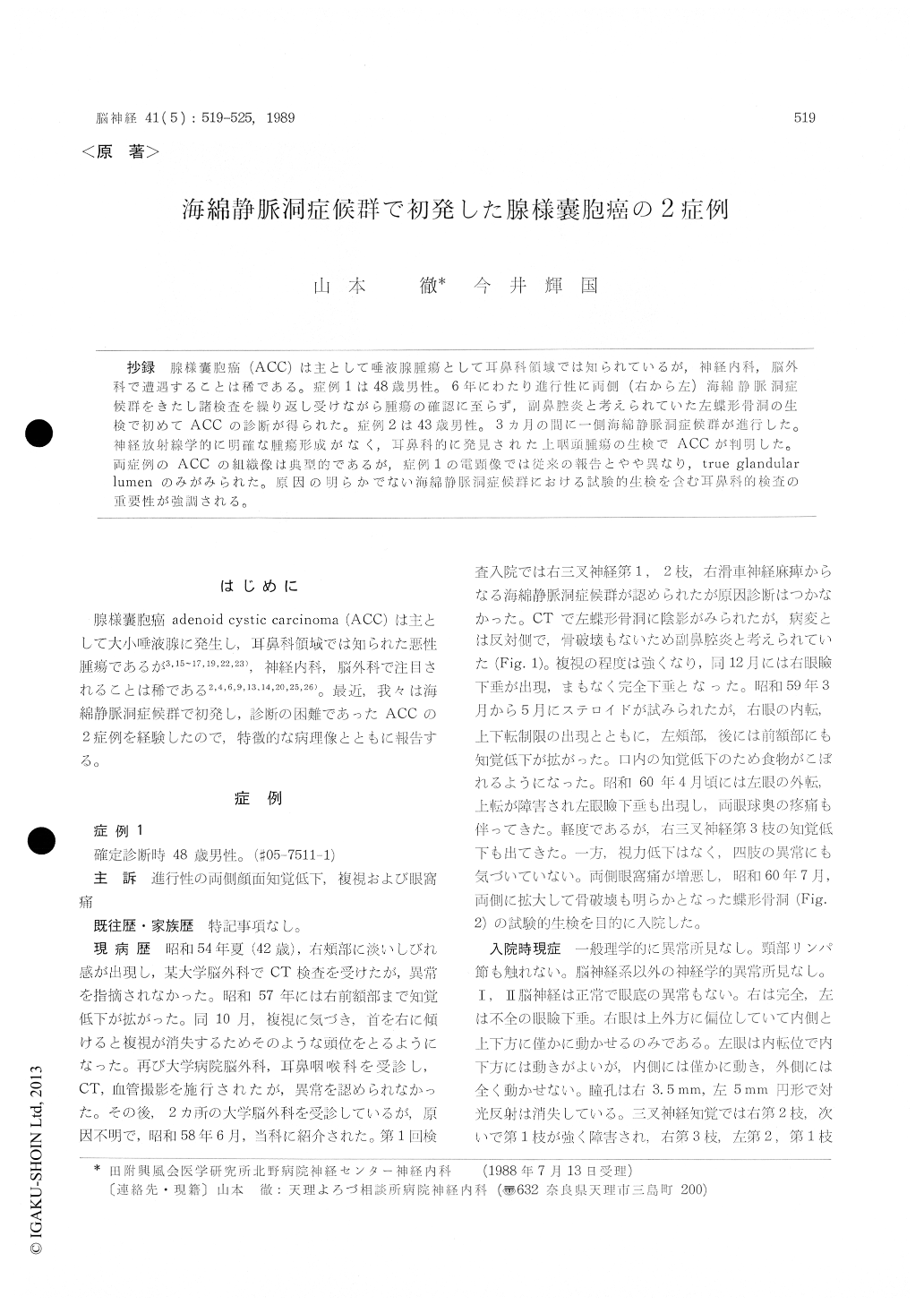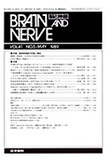Japanese
English
- 有料閲覧
- Abstract 文献概要
- 1ページ目 Look Inside
抄録 腺様嚢胞癌(ACC)は主として唾液腺腫瘍として耳鼻科療域では知られているが,神経内科,脳外科で遭遇することは稀である。症例1は48歳男性。6年にわたり進行性に両側(右から左)海綿静脈洞症候群をきたし諸検査を繰り返し受けながら腫瘍の確認に至らず,副鼻腔炎と考えられていた左蝶形骨洞の生検で初めてACCの診断が得られた。症例2は43歳男性。3カ月の間に一側海綿静脈洞症候群が進行した。紳経放射線学的に明確な腫瘍形成がなく,耳鼻科的に発見された上咽頭腫瘍の生検でACCが判明した。両症例のACCの組織像は典型的であるが,症例1の電顕像では従来の報告とやや異なり,true glandular lumenのみがみられた。原因の明らかでない海綿静脈洞症候群における試験的生検を含む耳鼻科検査の重要性が強調される。
Adenoid cystic carcinoma (ACC), usually arising in the major and minor salivary glands, is well known to otolaryngologists, but is rarely encoun-tered by neurologists or neurosurgeons. We re-port two ACC patients who presented initially with cavernous sinus syndrome and in whom CT did not demonstrate apparent abnormalities.
Case 1 is a 48-year-old man who first developed right cavernous sinus syndrome. The patient came to our hospital four years later. At this time, the only abnromality found on CT was the clouded sphenoid sinus on the left, which was interpreted as sinusitis. Two years later, the repeat CT revealed the enhancing lesions in the area of bilateral cavernous sinuses with bony destruction. The nasolaryngological exploration of the left sphenoid sinus made the diagnosis of ACC.
Case 2 is a 43-year-old man who developed unilateral cavernous sinus syndrome over three months. No radiological abnormality was appar-ent to the neurologist and neurosurgeons, however, the otolaryngologist detected a nasopharyngealmass diagnosed as ACC.
Histological examinations of the biopsy specimen from both cases revealed mixed cribriform, tubu-lar, and solid patterns characteristic of ACC. Electron microscopic study in Case 1 demonstrated microvilli-containing epithelial tumor cells forming true glandular lumens. In these cystic spaces there were cellular debris and crystalloids consist-ing of hexagonally-arranged tubules with a dia-meter of 25 nm. Although thick basement mem-brane was found in the basal portion of the tumor cells facing the connnective tissue, there was no so-called pseudocysts lined by replicated basal lamina. It is possible that the specimen examined electron microscopically is limited to a particular epithelial region. It is also possible that this represents a subtype of ACC, a topic of great controversy currently.
These cases demonstrate the importance of per-forming an otolaryngological exploration in pa-tients with cavernous sinus syndrome whose neu-roradiological findings are not diagnostic.

Copyright © 1989, Igaku-Shoin Ltd. All rights reserved.


